I had thought saffron milkcaps to be a rare novelty: maybe I would see one or two, and those would be filled with bugs. A few days after I discovered a true vein of them, I put up a fun story about hunting them with some Russian Immigrants in the Twin Cities.
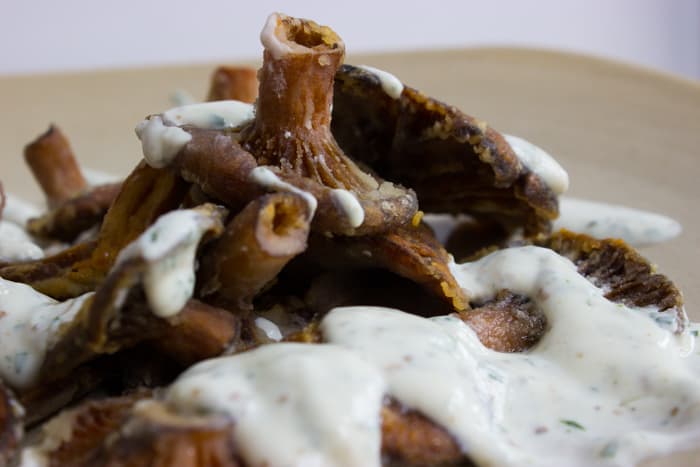
Almost immediately I got a message from a Turkish man espousing his love for saffron milkcaps. He said that in Turkey their words for it are "Kalinka" or "The Bloody One", which was interesting. He also mentioned he liked to serve them with a garlicky yogurt sauce, and described a simple recipe to me I'm sharing with you today.
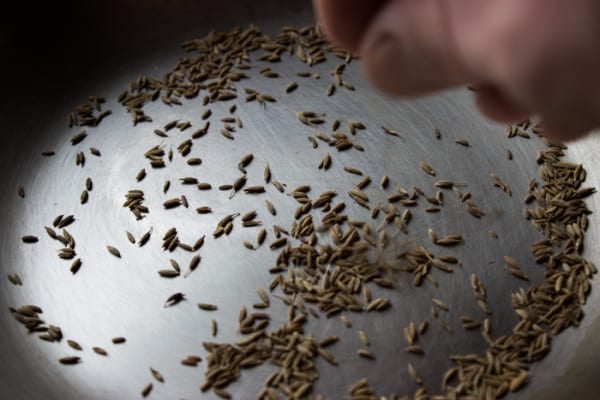
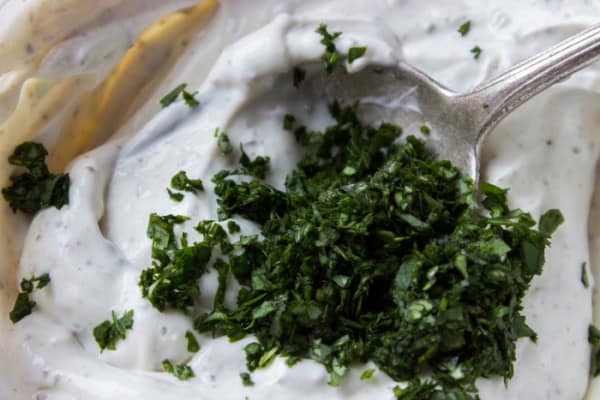
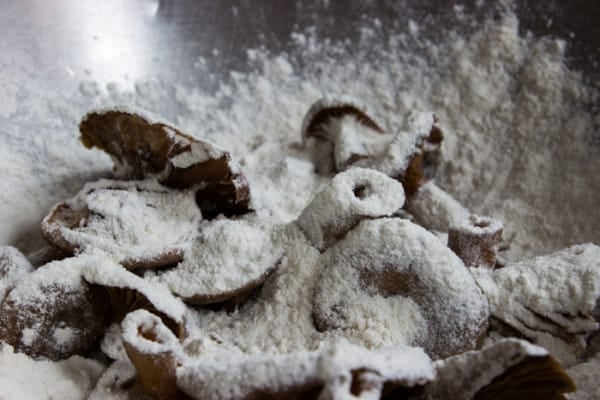
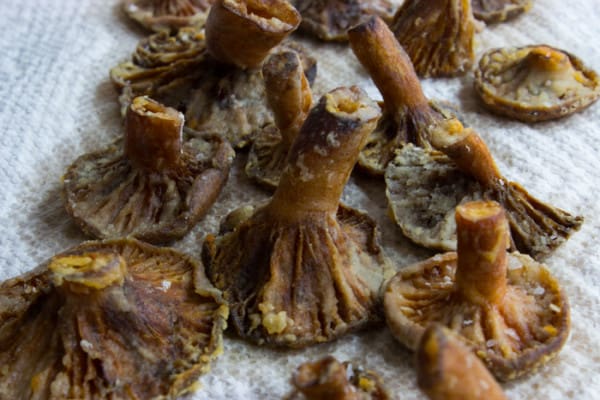
Cheers to my Turkish mushroom hunting friends, also to my Australian ones who are hunting these as we speak. If any of you guys have more fun recipes you like to add lactarius species to, send them my way; I'd love to see them.

Saffron Milk Caps with Cumin Yogurt
Ingredients
Cumin Yoghurt Sauce (makes ½ cup)
- ½ cup greek style yoghurt
- ½ teaspoon whole cumin seed
- ¼ teaspoon kosher salt
- 2 teaspoon fresh lemon juice
- 1 teaspoon minced fresh garlic
- tablespoon fresh chopped cilantro
Mushrooms
- 1 lb fresh saffron milkcaps
- All purpose flour as needed for dredging
- Ground cayenne pepper to taste
- ⅓ cup extra virgin olive oil preferably a middle eastern brand
- ⅔ cup flavorless oil such as grapeseed or canola
Instructions
Sauce
- Toast the cumin seed in a pan in the oven for 5 minutes at 350. Grind the seeds to a powder using a molcajete or a coffee grinder.
- Mix the ground cumin, fresh lemon, cilantro, salt, and garlic to the yoghurt, and reserve until needed.
Mushrooms
- Clean the saffron milkcaps and inspect for dirt and debris, if needed, brush them clean with a towel or quickly swish under cold water to remove any foreign objects. If you wash them, allow them to drain on paper towels or cloths for ten minutes or so before frying, changing the towels as needed if they become too wet.
- Once the mushrooms are dry again, trim the stems, leaving about an inch before the cap, then cut them into equal sized pieces. I find if the mushrooms are very large, I like to quarter them, if they are small I leave them whole, If they are medium sized, I halve them.
- Begin to heat a very wide saute pan with the oil. Mix the flour with the ground cayenne to taste, then toss the saffron milkcaps in it. Gently tap excess flour off of the mushrooms and then add to the pan, making sure the mushrooms don't touch each other, you may have to work in batches.
- Cook the mushrooms until golden brown and crisp, then remove to a paper towel to drain excess oil, sprinkling them with ¼ teaspoon salt while they are still warm to help the salt adhere. Serve immediately with the cumin yoghurt sauce drizzled over them or on the side as a dip.


Selim Sagol
4 years have past and I learned so much about mushrooms and the most important thing that I have learned is that I know so little 🙂 It is a great nostalgia to see my comment here about these lovely mushrooms. After four years and 40 different mushrooms that I have tasted since then, I can still say that the Kanlica is still the top mushroom in my list.
Selim
Hi there,
I am from Turkey and we looove Lactarius deliciosus, Lactarius deterrimus, Lactarius salmonicolor aka KANLICA means bloody. People doesn't care the difference. When they see a Lactarius deterrimus they call it "Pine Bloody". The rest is called only Bloody.
Pine Bloody has some dark greenish/blueish areas over the top. Despite the name all of them can be found in pine forests.
The distinctive thing for the Bloody is its orange gills. You never get wrong with orange gills.
People are selling these mushrooms in local market right now and the actual price is 6,50 USD for 1 KG. For early growns the prices becomes 11 USD and in abundance it becomes 5 USD. So it is very expensive when you think that half of it could be infested with maggots and would be thrown away.
Well, about the cooking, I have seen pickles, sautes, pies, rices, grills with this wonderfull mushroom. If you ask my favorite, if you have large quantity you can clean,slice and freeze it in bags and saute it just with salt and butter, be carefull not to over cook and lose the creamy water. And if you have litle amount (less then 5) you can grill it with salt. In my opinion any other ingredient will spoil the original flavour of the mushroom.
And last if you have very large quantity and you don't know what to do with so much of them, turkish pilaf with bloody will be excellent to feel the odor and flavour of the mushroom.
Dan Farmer
I found a bloody milk cap several years ago. I knew it was a milk cap, but didn't know which one, until I broke it open and saw the blood red sap. At the time, I didn't know they were edible, and so just showed my friends and told them what it was, then tossed it. I wish I could remember where that was!
Alan Bergo
Blast! Dan we must retrace your steps! Nice ramps too BTW, you lucky dog you.